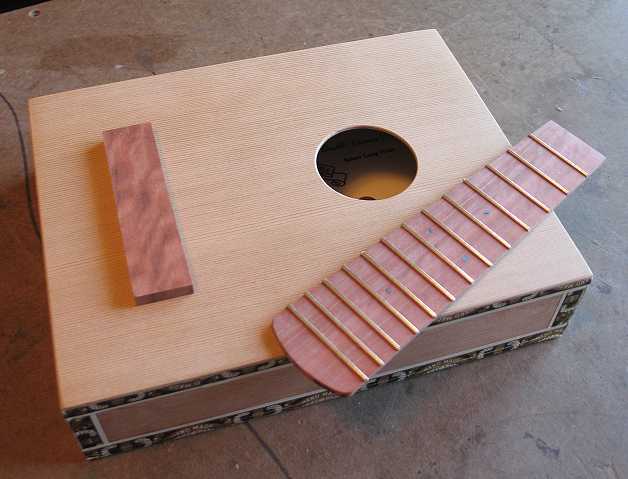
This box measures 9-1/4" long, 7-1/4" wide, and 2-1/4" deep. The first thing I did was to carefully remove the bottom (non-lid) plywood back of the box. To do that, I had to first slice through the paper between the back and sides, using an Exacto knife. Then I removed the staples that attached the back to the sides.

Next, I cut the Western red cedar top to the dimensions of the box. I thickness-sanded it to 1/16". The 2" diameter soundhole was cut out with a fly-cutter on the drill press, with the center of the hole 3" from the neck edge of the top.

